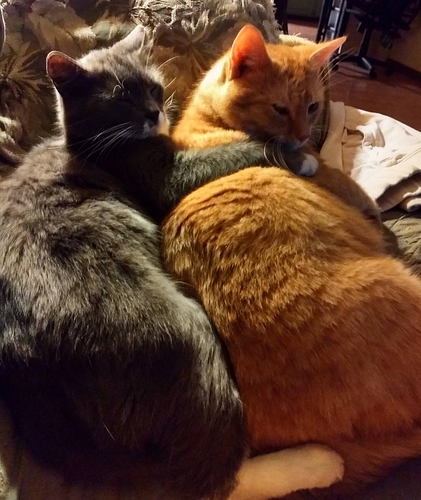We have 30 ac hobby farm in semi-rural/residential area. We have four very loved cats that are all fixed, vaxed, and are in/out during the daytime but always locked in the house at night.
About a year ago we started seeing a mostly white feral show up (we call him Patches). Last summer our lead cat and apex hunter, Vince, ran him off repeatedly. We didn’t see Patches over the winter, but he showed up again this spring. Patches seems to have taken up residence in our hay storage barn and is now repeatedly getting into fights with Vince. Vince remains undaunted, but has come back with fur missing and bites on his ears. Vince is very upset in that house in the evenings when Patches can be seen making his way to the barn, storms around the house yowling, becomes extremely tense and lashes out at our other cats. Can’t continue this way.
I’m not sure if Patches has a human family, but I doubt it. Patches is extremely skittish around people, have never gotten closer than 20 ft. Patches looks scruffy and skinny so I have been putting out food and water for him in the barn. One of my neighbors keeps baited live traps set in his hay barn for skunks/raccoons and said he caught this cat once and released him.
I would say ‘live and let live’ but this situation is not good for Vince and I worry that Patches will get eaten by a coyote. I have no idea if Patches is male or female or his age, but I suspect he will not make a great pet and even trapping him may be challenging. I plan to reach out to my local resources for a feral adoption/rehoming service. I need advice on what to do, have never tackled these issues before.

 )
)




